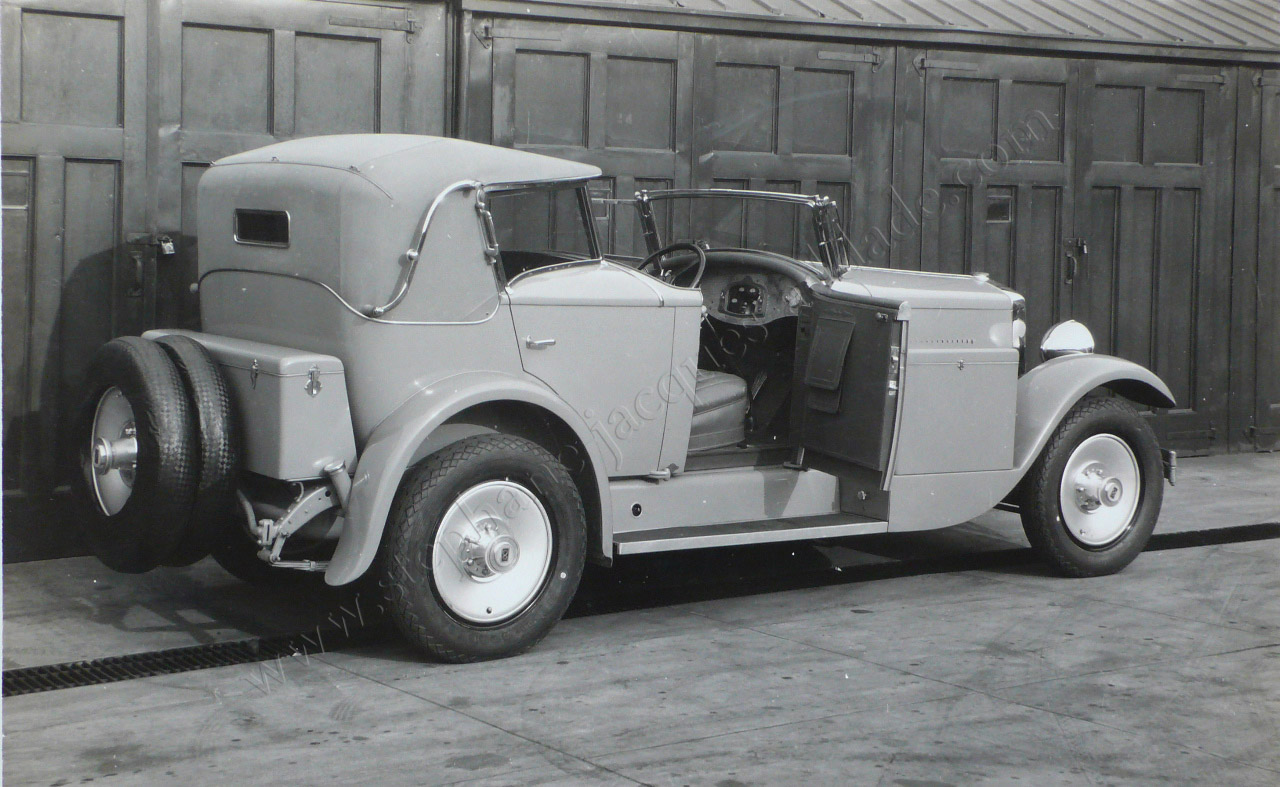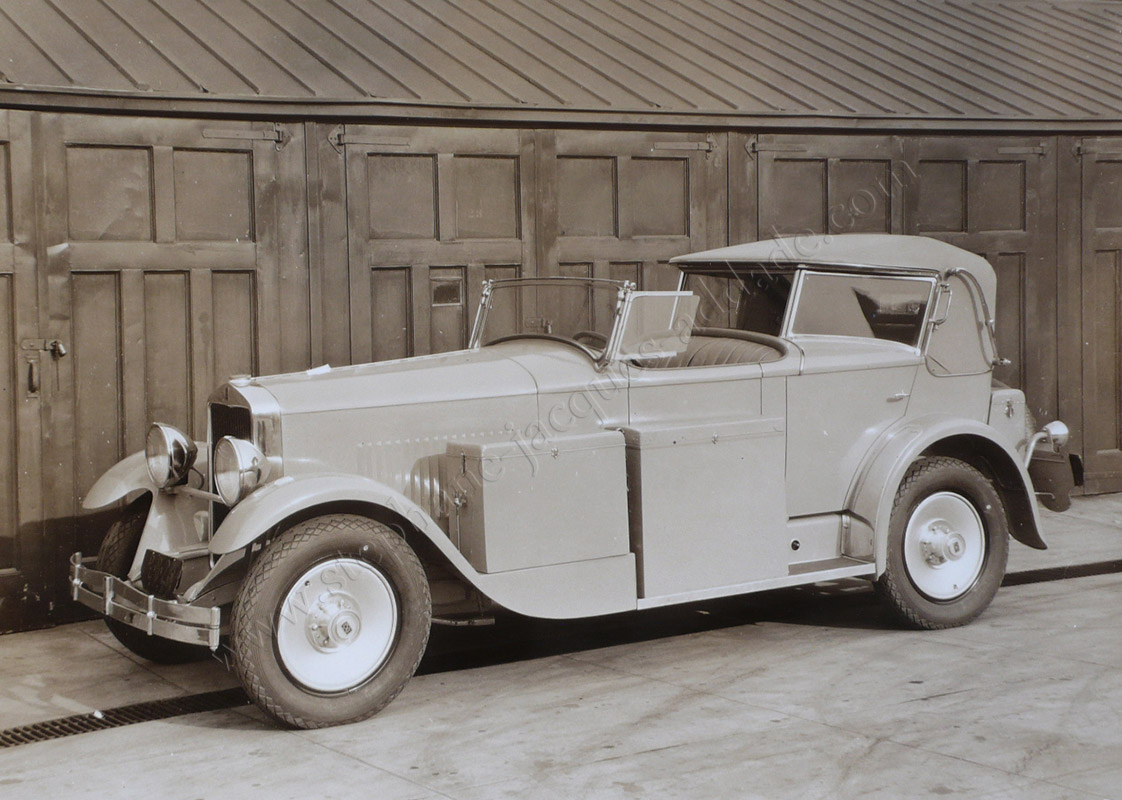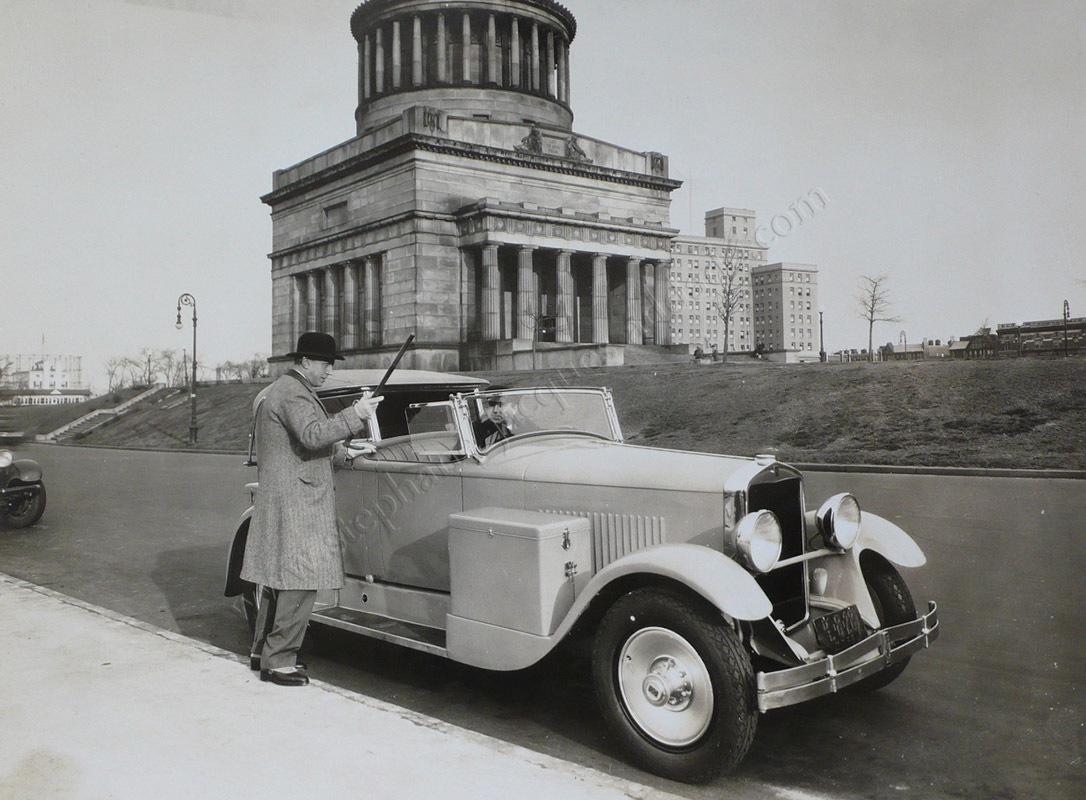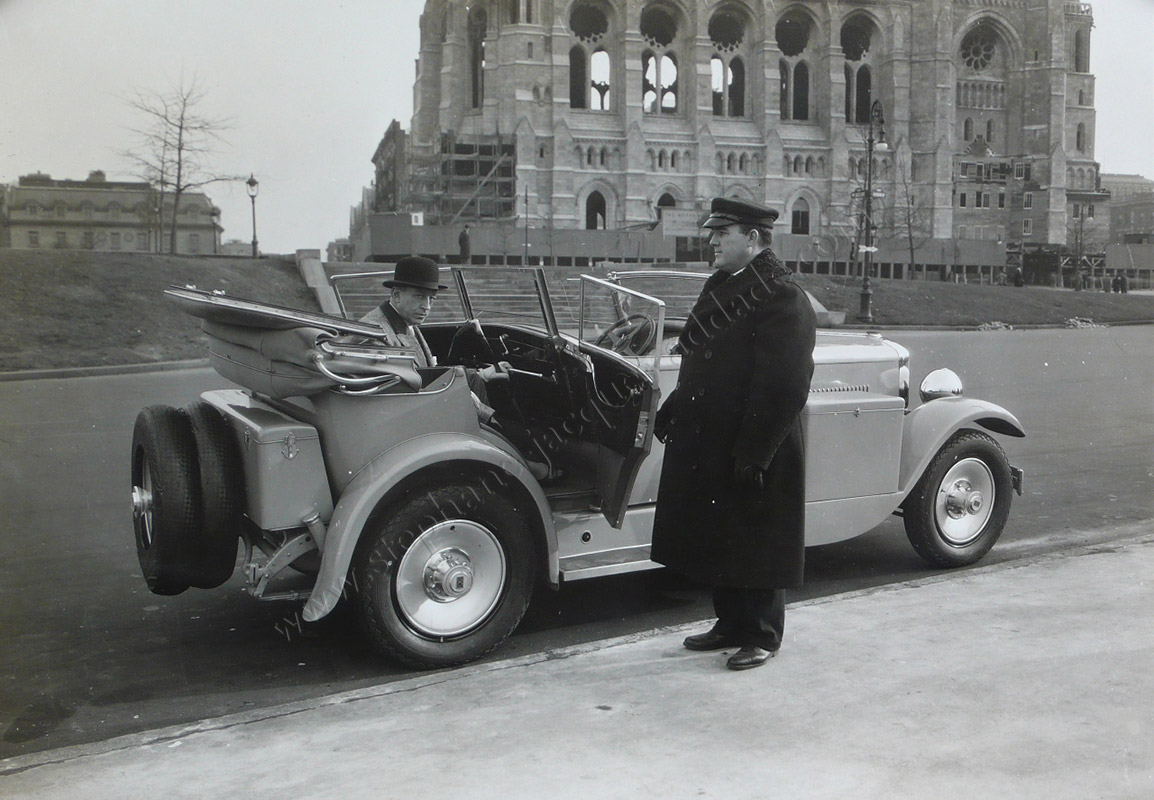

Tuesday 13 November 1928.
Having weathered an appalling storm, Bernard Boutet de Monvel, who was traversing the Atlantic aboard the S.S. Ile-de-France, made landfall in New York for the third time.
A few months previously, Hugh Mitchell, director of the Hupmobile and Mitchell Body Corporation, requested that the painter – for promotional purposes – do a special drawing of a car whose chassis was to be made by his firm. This 8-cyclinder motor car with its 3,348-metre wheelbase chassis (1) , which Bernard Boutet de Monvel had a body fitted to in France by Kellner, and which, at the end of his agreement with Hugh Mitchell was to be given to him, was about to be completed.
Hupmobile Motor Car, a firm in Detroit (Michigan), which was created in 1909 by Robert Craig Hupp (1877-1931) and later merged with the Mitchell Motor Car Company (Wisconsin) to create the Hupmobile and Mitchell Body Corporation was, that year, at the height of its boom with over 65,000 cars sold.
Bernard Boutet de Monvel arrived at his hotel, The Wyndham, on 42 West 58th Street, to learn that the directors of the Cadillac firm, which belonged to General Motors, wished to commission an unlimited number of promotional drawings at $2,000 a piece (2), an astronomical amount for the time (3). Indeed Alfred P. Sloan (1875 - 1966), the enterprising Director of General Motors, had just enlisted a young Californian designer, Harley J. Earl (1893 - 1966) and entrusted him with the creation of the first car design studio, the "Art and Colour Section". The brand new La Salle (a sub-brand of Cadillac) and the new Cadillac, which drew great inspiration from it, were immediate successes. As such, all that Alfred P. Sloan was lacking was the genius of Bernard Boutet de Monvel, the artist adulated by New York, to create promotional drawings for his new creations at no matter what cost. As a result, he didn't think twice about sending emissaries to him in Paris and New York, to tell him all about it...
Bernard Boutet de Monvel, who immediately opened up to Hugh Mitchell about the proposal made to him by his competitor, received a visit from his associate an hour later, who straightaway commissioned twelve promotional drawings from him, for the sum of $24,000, which equated to the unit price set by Cadillac.


Bernard Boutet de Monvel very quickly got down to work and had all the models presented to him from the New Century Six and New Century Eight Hupmobile range (Roadster, Sedan, Coupe, Victoria...), a new range now designed for both Him and Her. In this way, the car firm made itself into a creator of the mode, in the same was as the fashionable couturiers: "Manteau du soir par Molyneux" (Evening wrap by Molyneux), "Ensemble de sport par Régny" (Sports' ensemble by Régny), "Ensemble du soir par Jenny" (Evening ensemble by Jenny), "Tailleur d'après-midi par Prémet" (Afternoon suit by Prémet), "Costume de plage par Lenief" (Beach suit by Lenief), "Robe par Worth" (Her Frock by Worth)... and always an "Automobile par Hupmobile" (Car by Hupmobile)!
 However, Bernard Boutet de Monvel, it must be admitted, was more concerned about his own car, which Hugh Mitchell is so enthusiastic about that he offers to buy it back from him(4) ! Its arrival is scheduled for December: "my little Christmas" (5) laughs the latter.
However, Bernard Boutet de Monvel, it must be admitted, was more concerned about his own car, which Hugh Mitchell is so enthusiastic about that he offers to buy it back from him(4) ! Its arrival is scheduled for December: "my little Christmas" (5) laughs the latter.
However, on 22 December, catastrophe strikes! The car, which had arrived several days earlier, is still stuck in customs. With the keys to the boot having been lost, American customs, in this time of prohibition, refuse to let the Hupmobile go without checking that it doesn't contain any alcohol! The keys are finally relocated and on 27 December, Bernard Boutet de Monvel can write to his wife:


"The car is truly ravishing: how the devil you didn't have the curiosity to go to Kellner's before it left I have no idea. It is infinitely better executed than I'd dared hope. In fact, getting into it requires acrobatic skills but, once you're in, it's paradise. I went for a spin in it for a moment this morning and the engine is as delicious as that of a Packard or a Rolls. Another satisfying bonus is that they pay for my chauffeur and his outfit. That's a considerable saving as the coat alone is 4,000 Francs and his wages are 4,000 Francs a month too. They take charge of the insurance too. I haven't given up hope that the garage will be at the excellent Mitchell's expense, and why not the petrol too?! Naturally all this is spontaneous, as I didn't breathe a word of it.
Two hours of my time were taken up this morning being photographed in all the positions possible and imaginable, in the front, in the back, on top and under this car for advertising purposes, and in front of a dense crowd in the park. It was one heck of a thing to go through."
 In January 1929, whilst heading to Hugh Mitchell's place in the country in his Hupmobile, with a particular view to meeting the manufacturer's daughter, whose portrait he wished to paint free of charge to thank her father for the car he'd just given him, Bernard Boutet de Monvel wrote to his wife again (6) :
In January 1929, whilst heading to Hugh Mitchell's place in the country in his Hupmobile, with a particular view to meeting the manufacturer's daughter, whose portrait he wished to paint free of charge to thank her father for the car he'd just given him, Bernard Boutet de Monvel wrote to his wife again (6) :
"Our car, which got me here, runs marvellously well. She goes like the clappers with fabulous acceleration. What a delight it will be to have her in France!"
 Bernard Boutet de Monvel did indeed repatriate his Hupmobile to France, but he wasn't able to use it as much as he'd have liked: very soon, its upkeep proved to be expensive but, most importantly, Parisian specialists capable of repairing such mechanics, were very few and far between. As such, the Hupmobile was quickly put away in a garage and ended up being sold a few years later...
Bernard Boutet de Monvel did indeed repatriate his Hupmobile to France, but he wasn't able to use it as much as he'd have liked: very soon, its upkeep proved to be expensive but, most importantly, Parisian specialists capable of repairing such mechanics, were very few and far between. As such, the Hupmobile was quickly put away in a garage and ended up being sold a few years later...
1 - The wheelbase is the distance between the front and the rear wheel axle unit. With a specially tuned top of the range chassis, this length determines the car’s stability. (Revenir)
2 - Letter from Bernard Boutet de Monvel to his wife dated 13 November 1928. Revenir)
3 - Hupmobile’s Century Six was then sold at between $1,345 and $1,645, whilst the Century Eight sold for between $1,825 and $2,125. Revenir)
4 - Letter from Bernard Boutet de Monvel to his wife dated 17 November 1928. Revenir)
5 - Letter from Bernard Boutet de Monvel to his wife dated 11 December 1928. Revenir)
6 - Letter from Bernard Boutet de Monvel to his wife dated 30 January 1929. Revenir)
Dernière modification par Stéphane-Jacques Addade, le 23/03/2015